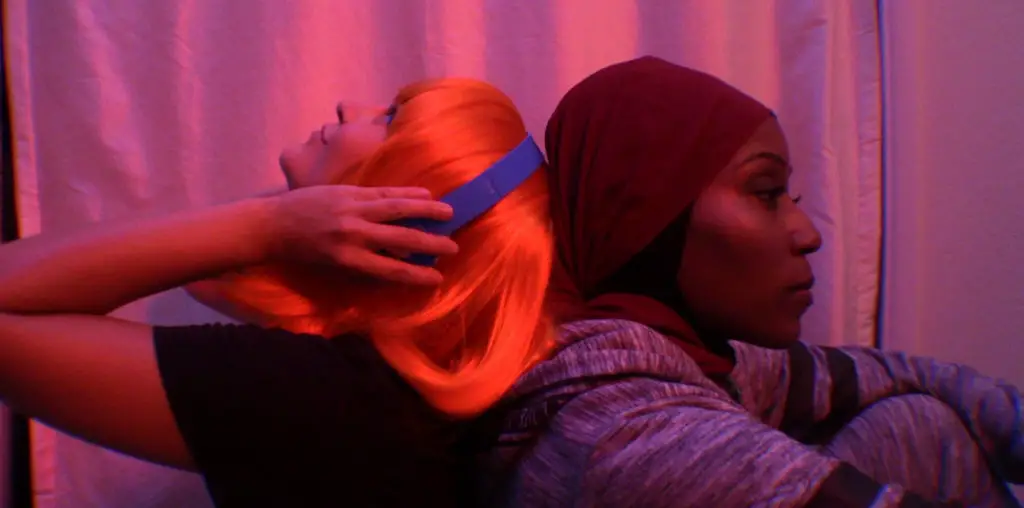
Laying the cards down on the table here, “American Gun” is going to be compared to “Crash”; it’s just going to happen. I won’t nor did I base my judgments on “American Gun” by comparing it to “Crash”, but you can sense the allusions to it. The ensemble cast, separate narratives, et al. “American Gun” is reminiscent of “Crash”, and it’s become a zeitgeist for ensemble pictures rather quickly, in spite of what we’re willing to admit. And like “Crash”, it basically confronts another topic of American society that we’re confronted with, except it’s confronted with much more realistic storytelling and characters. Gun violence is the topic for this one, and director Arec Avelino’s story of the many possible scenarios involving firearms comes off as much more intimate and subtle, yet is never as intelligent as it thinks it is.
Basically, with an all-star cast, “American Gun” explores the potential for, and the after effects of gun violence, and how violence can be spread by mere incidences and circumstances. There are so many sub-plots here that I could spend seven paragraphs just describing the film, but we learn of gun violence through low class drug infested areas, and middle-low class suburbia, and though there are nothing but effective strong performances, the most three-dimensional story however involves the mother of a young man who engaged in a Columbine-esque school shooting that took the lives of many. Marcia Gay Harden is Janet, the mother of the shooter who must live in the town where the shooting took place because she can not afford to leave it behind. Bagatourian and Avelino wisely flesh out the possibilities for in-depth psychological examination by showing her interacting with people around her and in attempting to help her son David live with the fact that his brother murdered innocent people.
Harden’s character has to face the victim’s everyday and be subjected to manipulation from others. She’s not a bad woman who refused to acknowledge her children, she’s just a woman working hard and trying to put food on the table and one of them slipped from her grip. Harden’s plot is possibly the most emotionally gripping, because she’s sadly blamed for the murder, and Harden just gives an excellent performance here; it’s difficult not to sympathize with the situation she’s stuck in. Chris Marquette’s performance is sublime as the brother of the school shooter who must also deal with his death and face the reality that he actually killed people, and sadly go back to the school where the shooting took place.
Much like “Crash”, the film is told through many different narratives in different time periods, though there are no “coincidences” that connect the characters altogether. These are different people experiencing violence and the potential for violence in their home lives. Forrest Whitaker gives a very good performance as the principal of a public school who is outnumbered and frightened that a shooting could happen again if he doesn’t keep a vigil eye. He shows apparent desperation of a man struggling to keep all the seams of his life together in one piece, but is sadly losing the battle. In a sweet sub-plot, Donald Sutherland plays Carl, a man who owns a gun shop whose grand daughter comes to work with him everyday. Linda Cardellini is Mary-Anne, a girl whose friend was nearly raped, and is hurt attempting to save her and now considers buying a gun—which she’s voiced her immense antipathy for–as a last resort for self-defense.
Carl is trying to discover why she’s so sad, and is not a proponent of firearms in spite of owning a gun shop. In one scene he mercilessly tries to keep a young girl from buying a large pistol and convinces her to buy a smaller less powerful one. The sad fact is though, I doubt many will see it as a film trying to discuss the endless circle of gun violence, because it’s often a preachy and manipulative movie that sends off a weak message that never really inspires much exploration from the audience; gun violence, though still relevant, hardly makes “American Gun” a stand out film. Not to mention, the last act of “American Gun” is quite possibly one of the most ridiculous and forced dramatic twists I’ve seen in years. Sure, it’s very possible for the situation in the climax to happen, but for Avelino to draw out the story and provide such a shrewd closer just left me feeling jerked around by the screenwriters quite obviously trying to gauge emotions from their audience. Such inane tactics shouldn’t be provided in a movie that speaks for itself.
